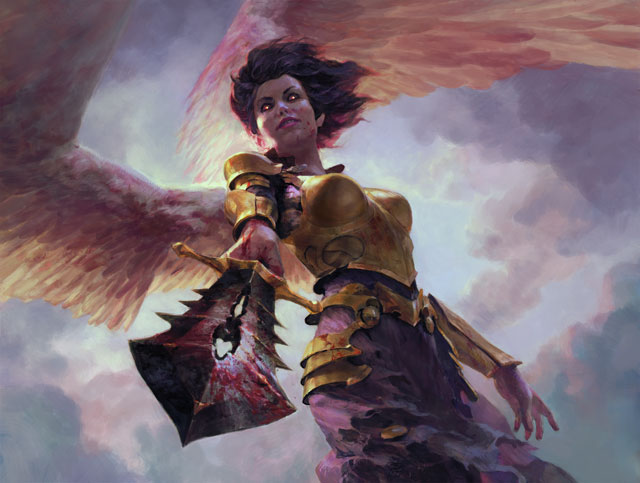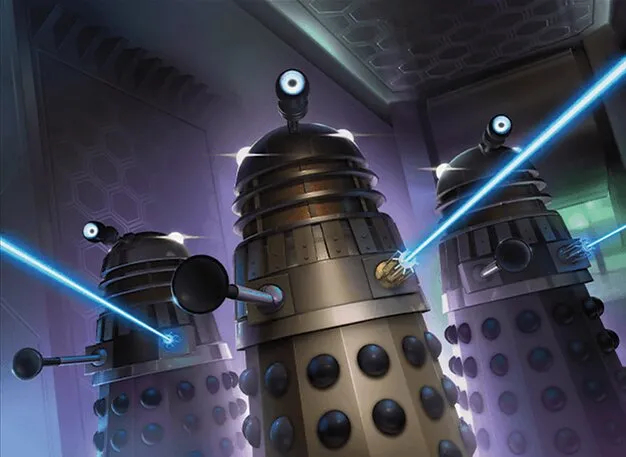Drafting is Awesome
With the recent release of Shadows Over Innistrad, there’s been a lot of talk about the new Standard format, and how the changes will affect things moving forward. As someone who vastly prefers to play limited, a new set release means one thing to me: New Draft Format! I think WotC has done an incredible job with the limited design of this set as it’s both fun to draft and fun to play.
Last week, the very talented JP Vazquez cracked some packs and did a great job at outlining the general thought process that goes into pack 1 of drafts. He also touched on some more general thoughts on the format the week before, and I highly recommend reading both of those articles before continuing on here. Don’t worry, I’ll wait.
Great! Now that you’re caught up, I wanted to talk about an archetype that I’ve been having a lot of fun and success with so far, Green White. GW was one of the most aggressive archetypes in original Innistrad, (largely because of how busted Travel Preparations turned out to be), and I was excited to see that it continues to be quite powerful in SOI. Although there aren’t any absurd two-coloured cards rewarding you for being in GW this time around (insane mythics notwithstanding), I find that I am often pulled into these colours during the draft.
Creatures + Removal = Effective Limited Deck
I have found that my GW decks have all been fairly aggressive with 15-17 creatures, between 4-6 removal spells, and the odd pump spell and/or equipment thrown in for good measure. The fact that both Green and White have efficient removal spells at common and uncommon is a large part of the reason why the deck is so good.
Let’s take a look at the kind of GW deck I’ve had success with.
GW Aggro
This is by no means an ideal list, and you’ll notice that it is mostly commons with very few uncommons. GW decks can certainly be far more impressive, but I’ve found that even an unassuming collection of commons like this can be quite powerful. Let’s talk about what makes the deck work.
Creatures
Mana curve is one of the more important parts of this kind of deck, and finding two-drop creatures is definitely a priority. I’ve found that most of the common two-drops are fairly interchangeable, with Hinterland Logger and Quilled Wolf slightly ahead of the others. It’s really important to be able to apply early pressure with this kind of deck, so make sure you have enough early plays to do so.
There are a few choice uncommons that really take the deck to the next level, and Veteran Cathar is right up there. Being a two-drop is great, and allowing you to use your mana to make combat a nightmare later on makes him incredibly good in GW. It is important to have a reasonable human count to make him great, although I’ve found that you tend to get them fairly easily.
You may have noticed that the lone five-drop seems a little out of place in my example deck, but I included it because I wanted to talk about how great this card is. Although I have definitely kept him in the sideboard while building, more and more I’ve found I’m running him maindeck, because he makes it so much harder for your opponent to race you. A 2/5 reach is hard to get by, and being able to fog for a turn is surprisingly relevant when you’re racing. They also tend to go reasonably late, so picking one up shouldn’t be too difficult.
Removal
Prey Upon was one of the great commons in original Innistrad, and its slightly more expensive one-sided cousin picks up that mantle proudly. Yes, it’s sorcery speed, yes it can be disrupted, and yes it requires you to have a creature in play, but Green decks and GW decks in particular don’t really care about any of those drawbacks. The fact that it costs two mana means that by the time your opponent has played something you want to bite, you can do that as well as playing a two or three-drop creature to keep up the pressure. You do need to be careful about when you get your Chomp Chomp on, but it generally isn’t that hard to wait until your opponent taps out to start biting things. Blue and Red decks in particular have quite a few ways to disrupt this card, so do keep that in mind. All that being said, any functional GW deck wants as many of these as it can get.
Although this card is technically card disadvantage as it requires two of your cards to deal with one of your opponent’s, it turns out that mana-efficient unconditional removal is quite strong despite the drawback. It’s obviously not really something you want to play on turn three, but most games you want to save your removal for something truly difficult to deal with, so the drawback actually encourages you to be smart with your removal. It also does a reasonable job of enabling delirium, and the fact that it exiles is occasionally quite relevant as there are several creatures that like to come back from the dead. It can also deal with problem enchantments or artifacts, which is a nice option to have (although not one I find that I use all that often). It is worth noting that you don’t want infinite of these because the drawback is real, but I’ve found that two seems to be the perfect number.
True-Faith Censer
This card deserves its own section, and let me tell you why. In a deck that naturally ends up with 8+ humans, this card is the real deal. Turning your dorks into real threats is huge, and the vigilance means that if they’re not trading with your idiots than they’re not attacking either. The nice thing, in theory, is that this card should be mediocre in most other decks, which means that it should be fairly easy to pick up. In practice, I find that they disappear much earlier than they should, and I would recommend grabbing one when you can (although obviously not over removal.) Gryff’s Boon is another card that’s great in GW aggro, although being an uncommon makes it harder to pick up.
Give it a try!
I’ve had a lot of fun with this kind of deck so far, and highly recommend giving it a shot. Your priorities should be removal, then the first True-Faith Censer/Gryff’s Boon, then two-drops, then other creatures. Also, be sure to say “Chomp Chomp” when you cast Rabid Bite for maximum value.
Dan Erickson
@Erickson_Dan on Twitter










